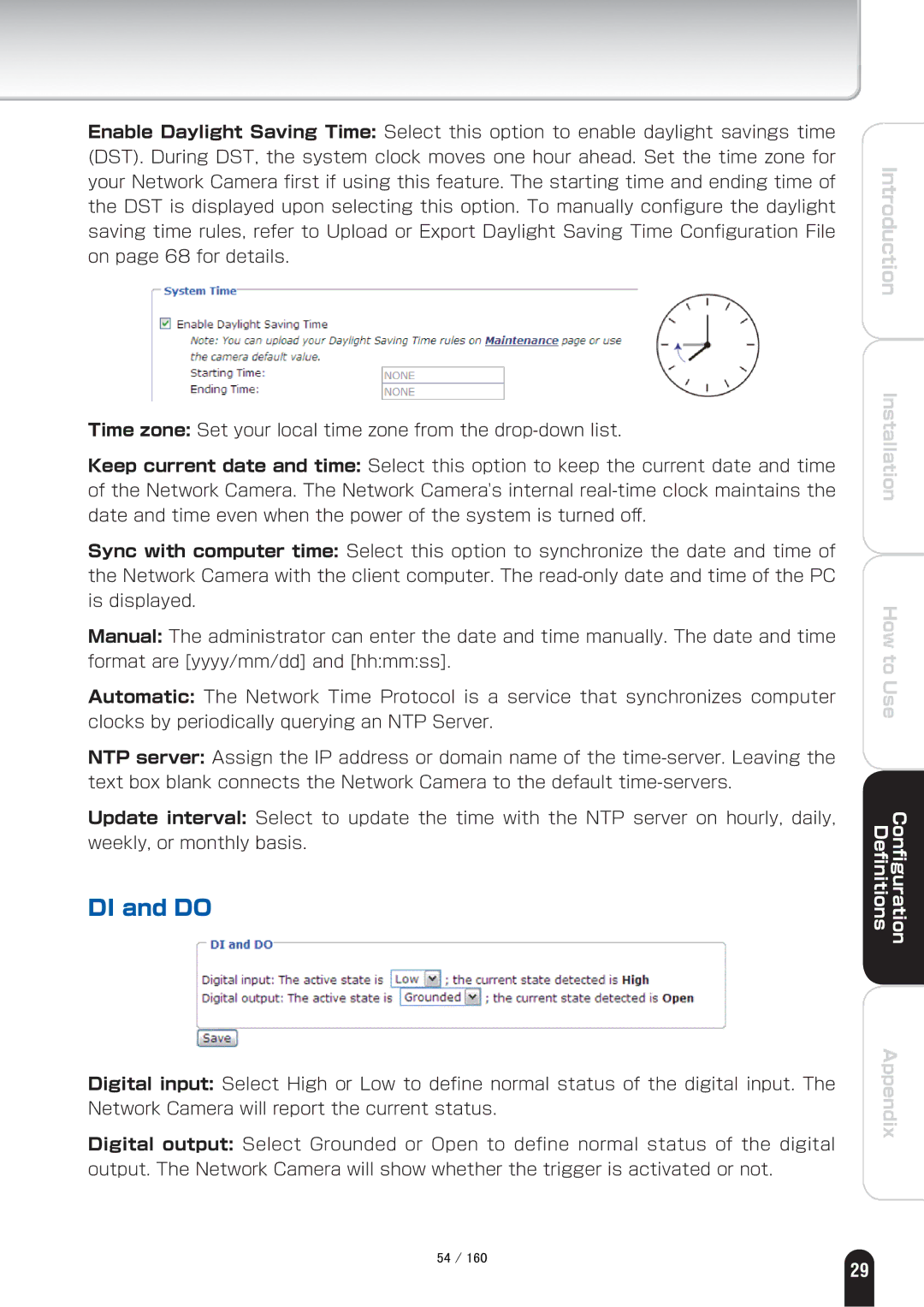
Enable Daylight Saving Time: Select this option to enable daylight savings time (DST). During DST, the system clock moves one hour ahead. Set the time zone for your Network Camera first if using this feature. The starting time and ending time of the DST is displayed upon selecting this option. To manually configure the daylight saving time rules, refer to Upload or Export Daylight Saving Time Configuration File on page 68 for details.
Time zone: Set your local time zone from the
Keep current date and time: Select this option to keep the current date and time of the Network Camera. The Network Camera's internal
Sync with computer time: Select this option to synchronize the date and time of the Network Camera with the client computer. The
Manual: The administrator can enter the date and time manually. The date and time format are [yyyy/mm/dd] and [hh:mm:ss].
Automatic: The Network Time Protocol is a service that synchronizes computer clocks by periodically querying an NTP Server.
NTP server: Assign the IP address or domain name of the
Update interval: Select to update the time with the NTP server on hourly, daily, weekly, or monthly basis.
DI and DO
Digital input: Select High or Low to define normal status of the digital input. The Network Camera will report the current status.
Digital output: Select Grounded or Open to define normal status of the digital output. The Network Camera will show whether the trigger is activated or not.
㪌㪋㩷㪆㩷㪈㪍㪇
Introduction
Installation
How to Use
Definitions | Configuration |
Appendix
29
